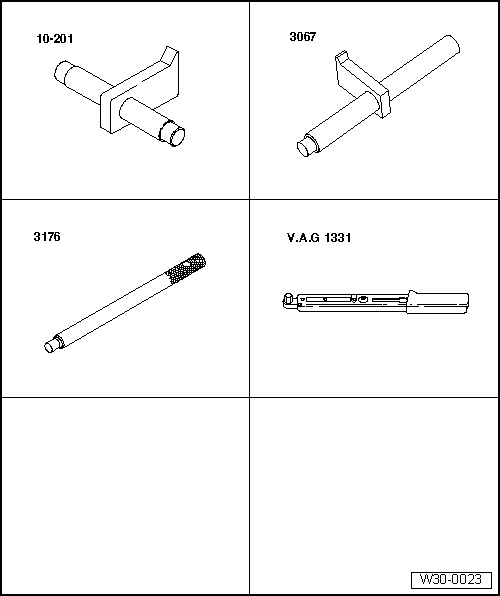
Note | t
| Observe the notes on removing and installing the clutch master cylinder → Chapter and the clutch slave cylinder → Chapter. |
| t
| On vehicles with SAC pressure plate (self-adjusting clutch) an adjuster ring has to be reset when only the clutch plate is renewed → Chapter. |
| t
| To avoid damaging SAC pressure plate when removing and installing, observe assembly instructions for SAC pressure plate → Chapter. |
| t
| Check that SAC pressure plate is not distorted → Fig.. |
| t
| If the vehicle is fitted with a self-adjusting clutch (Sachs version), the clutch plate and pressure plate can only be renewed together → Chapter. |
| t
| Renew clutch plate and pressure plate if riveted joints are damaged or loose. |
| t
| To avoid damaging dual-mass flywheel during removal, please observe instructions for removal → Fig.. |
| t
| Clean the gear teeth of the input shaft and the gear teeth of the hub of used clutch disks, remove any corrosion and only apply a very thin layer of the grease for the clutch-disk spline (Allocation: → Spare Spare parts catalogue). Then move the clutch plate on the input shaft from side to side, until the hub moves smoothly on the shaft. It is essential to remove excess grease. |
| t
| The pressure plates are protected against corrosion and are greased. Clean contact surface only; otherwise the service life of the clutch will be considerably reduced. |
| t
| To reduce the unpleasant smells of a burnt clutch, the clutch bell-housing must be thoroughly cleaned, along with the flywheel and engine at the side facing the clutch. |
|
|
|

 Note
Note